In recent years, the kitchen appliance industry has witnessed a surge in the popularity of restaurant-grade air fryers. This shift in consumer preference is reshaping the landscape of both professional and domestic cooking. As these appliances gain traction, it’s essential to delve into the factors driving their demand, the key players in the market, the innovations that set them apart, and the impact they have on both professional kitchens and home cooks. Additionally, understanding the regulatory considerations, supply chain dynamics, consumer insights, and the future outlook for these air fryers is crucial for anyone looking to navigate this evolving market.
The Rise of Restaurant-Grade Air Fryers in the Western Markets
The Western markets have witnessed a remarkable surge in the popularity of restaurant-grade air fryers. This innovative kitchen appliance has been making waves in both commercial and residential kitchens alike, challenging traditional cooking methods and redefining the culinary landscape. The rise of these high-performance air fryers can be attributed to several key factors that have collectively contributed to their growing presence in the Western markets.
Firstly, the health and wellness revolution has played a significant role in the adoption of restaurant-grade air fryers. Consumers are increasingly conscious of the nutritional content of their meals, seeking alternatives to deep-frying that can offer healthier cooking options. These air fryers use hot air to circulate around the food, reducing the amount of oil needed and thus lowering the calorie count without compromising on flavor.
Secondly, the convenience factor cannot be overlooked. With busy lifestyles and the demand for quick, yet delicious meals, restaurant-grade air fryers have become a staple in many kitchens. They can cook a variety of foods, from crispy French fries to succulent chicken wings, in a fraction of the time it takes to fry them traditionally. This efficiency has made them a favorite among busy professionals and families alike.
The quality of the food cooked by these air fryers is another reason for their popularity. The technology ensures that the food is crispy on the outside while remaining tender on the inside, mimicking the texture of deep-fried foods without the associated health risks. Chefs and home cooks are now able to enjoy the same taste and texture in their own homes, making restaurant-grade air fryers a must-have for food enthusiasts.
Moreover, the versatility of these appliances is undeniable. Restaurant-grade air fryers can perform a variety of functions, including roasting, baking, and even dehydrating. This multi-functional aspect has made them a one-stop solution for all cooking needs, reducing the need for multiple appliances and saving space in the kitchen.
The technology behind these air fryers has also seen significant advancements. Modern models are equipped with digital controls, allowing users to set precise temperatures and cooking times. Some even come with preset programs for different types of food, making it easy for even the most inexperienced cooks to achieve professional-level results.
In terms of the market, the demand for restaurant-grade air fryers has been on the rise, with sales figures reflecting this growth. According to market research reports, the global air fryer market is expected to grow at a significant compound annual growth rate (CAGR) over the next few years. This upward trend is particularly pronounced in Western countries, where consumers are more likely to invest in high-quality kitchen appliances.
The rise of these air fryers has also had a notable impact on the commercial kitchen industry. Restaurants and cafes are increasingly incorporating these appliances into their kitchen setups to offer healthier menu options to their customers. This shift has not only improved the health profile of the dishes but has also been a strategic move to cater to the health-conscious consumer base.
Furthermore, the sustainability aspect cannot be ignored. By reducing the amount of oil used in cooking, restaurant-grade air fryers are contributing to a more eco-friendly approach to food preparation. This environmental consciousness is resonating with consumers who are not only health-focused but also environmentally responsible.
As the popularity of restaurant-grade air fryers continues to soar, so does the competition among manufacturers. Leading brands are investing heavily in research and development to improve their products and stay ahead of the curve. This competition has led to a proliferation of innovative features, such as larger capacities, improved energy efficiency, and sleeker designs.
In conclusion, the rise of restaurant-grade air fryers in the Western markets is a testament to the evolving culinary landscape and the changing preferences of consumers. With their health benefits, convenience, versatility, and technological advancements, these air fryers are poised to remain a key player in the kitchen appliance market for years to come.
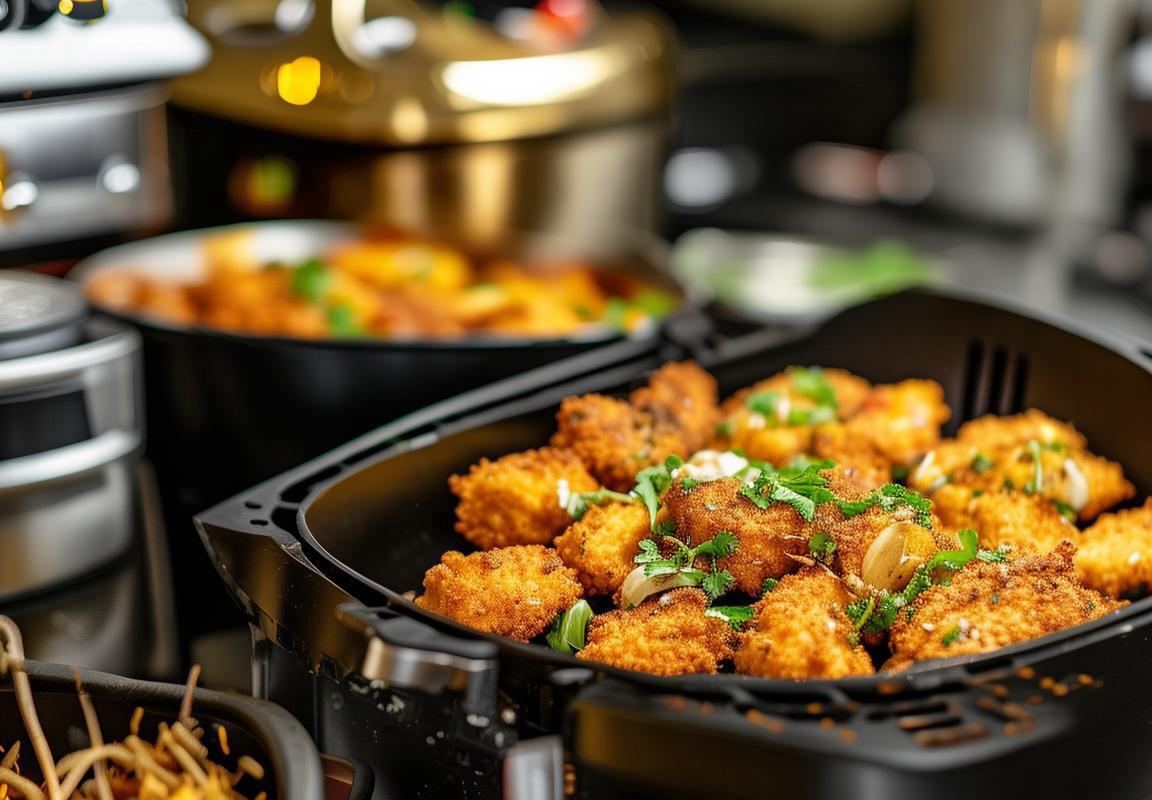
Understanding the Demand: What’s Driving the Trend?
The surge in popularity of restaurant-grade air fryers in Western markets is a phenomenon that reflects a multifaceted shift in consumer preferences and culinary trends. This demand can be attributed to several key factors that are reshaping the way we perceive cooking and health.
-
Health and Wellness AwarenessConsumers in Western countries are increasingly conscious of their health and wellness, leading to a demand for cooking methods that are both delicious and nutritious. Air frying offers a healthier alternative to traditional frying, which involves less oil and can significantly reduce calorie intake.
-
Convenience and Time-SavingThe fast-paced lifestyle of many Westerners has led to a quest for convenient cooking solutions. Restaurant-grade air fryers provide a quick and efficient way to prepare meals with minimal cleanup, appealing to busy professionals and families alike.
-
Gourmet at Home ExperienceWith the rise of culinary influencers and cooking shows, there’s a growing desire among consumers to recreate gourmet experiences at home. Restaurant-grade air fryers mimic the commercial cooking process, allowing home chefs to experiment with a variety of recipes that were once exclusive to professional kitchens.
-
Cost-EffectivenessAs the cost of dining out continues to rise, more people are seeking to replicate high-quality meals at home. Restaurant-grade air fryers offer a cost-effective solution that can produce restaurant-quality results without the expense of a professional kitchen setup.
-
Sustainability and Eco-Friendly CookingThe environmental movement has prompted many to adopt cooking methods that are more sustainable. Air frying consumes less energy compared to conventional ovens and fryers, making it an eco-friendly choice for consumers who are concerned about their carbon footprint.
-
Versatility in Cooking TechniquesModern restaurant-grade air fryers are not just for crispy fried foods; they offer a wide range of cooking modes, including baking, roasting, and even dehydrating. This versatility allows for a diverse menu of dishes, from crispy fries to tender roasted vegetables.
-
Technological AdvancementsThe evolution of technology has played a significant role in the demand for restaurant-grade air fryers. Features like digital controls, adjustable temperature settings, and timers have made these appliances user-friendly and adaptable to various recipes and cooking times.
-
Social Media InfluenceSocial media platforms have become hotbeds for product discovery. With countless cooking enthusiasts sharing their air fryer recipes and success stories, these appliances have garnered attention and sparked interest among a broad audience.
-
Culinary Education and Recipe AvailabilityThe accessibility of cooking education and recipe resources has also contributed to the demand for restaurant-grade air fryers. From online tutorials to recipe books, aspiring chefs have the tools and knowledge to use these appliances effectively.
-
Professional Chefs’ EndorsementsProfessional chefs have been instrumental in promoting the benefits of air frying. Their endorsements have not only validated the appliance’s performance but have also inspired home cooks to explore new cooking methods.
-
The Shift Towards Smart AppliancesThe integration of smart technology into kitchen appliances has become a norm. Restaurant-grade air fryers that can be controlled via smartphone apps are particularly appealing to tech-savvy consumers who value connectivity and convenience.
-
Cultural Diversity in CookingThe Western world is more culturally diverse than ever before, leading to a demand for a variety of international cuisines. Air fryers can handle a range of cooking styles, making it easier for consumers to enjoy global flavors at home.
-
Retailer Support and AvailabilityRetailers have played a crucial role in making restaurant-grade air fryers accessible. With a variety of brands and models available, consumers have ample choices to suit their needs and budgets.
-
The Importance of Quality and DurabilityGiven the higher price point of restaurant-grade air fryers, consumers are seeking appliances that offer quality and durability. The demand for long-lasting products that can withstand the rigors of frequent use is a significant driver of this market trend.
In conclusion, the demand for restaurant-grade air fryers in Western markets is a complex interplay of health consciousness, convenience, culinary aspirations, and technological advancements. These factors collectively contribute to a growing trend that is likely to continue shaping the kitchen appliances industry.

Key Players in the Restaurant Grade Air Fryer Industry
In the bustling landscape of the restaurant-grade air fryer industry, several key players have emerged as leaders, each bringing their unique strengths and innovations to the table. From established appliance manufacturers to niche companies specializing in commercial-grade equipment, these entities are shaping the future of kitchen technology.
One such prominent player is Gourmia, a brand known for its commitment to high-quality kitchen appliances. Gourmia’s restaurant-grade air fryers are designed with commercial kitchens in mind, offering robust construction and advanced features that cater to both the demands of busy restaurants and the growing market of home chefs.
Another heavyweight in the industry is Breville, an Australian company that has made a name for itself in the premium appliance market. Their restaurant-grade air fryers are a testament to their dedication to innovation, with sleek designs and cutting-edge technology that ensure efficient cooking and consistent results.
In the realm of commercial appliances, Electrolux stands out as a global leader. The Swedish brand has a long history of producing durable and reliable kitchen equipment, and their restaurant-grade air fryers are no exception. Known for their commercial-grade build and industrial-strength components, Electrolux’s offerings are a favorite among professional chefs who require equipment that can withstand the rigors of daily use.
Cuisinart, a household name in the culinary world, has also ventured into the restaurant-grade air fryer market. Their products are known for their versatility and user-friendly features, making them a go-to choice for both professional kitchens and home cooks looking to replicate restaurant-quality dishes at home.
The Netherlands-based Philips, known for its health-focused appliances, has also entered the restaurant-grade air fryer space. Their products are not only designed to produce deliciously crispy food but also to promote healthy cooking with less oil than traditional frying methods. Philips’ commitment to innovation is evident in their air fryers, which often feature smart technology and intuitive interfaces.
In the United States, KitchenAid, a brand synonymous with durability and innovation, has introduced restaurant-grade air fryers that blend style with performance. Their appliances are often found in both commercial and residential settings, reflecting the brand’s ability to cater to a wide range of customers with varying needs.
When it comes to specialized manufacturers, there are companies like Actifry, which has developed a unique technology that allows for continuous, undisturbed cooking, resulting in evenly cooked food. Their products are a staple in many commercial kitchens and have gained popularity among home users as well.
The competition is also fierce among smaller, niche players who focus on specific segments of the market. Companies like Avanti and Instant Brands offer restaurant-grade air fryers that are tailored to specific needs, whether it’s for a bakery, a café, or a fast-food establishment.
The rise of these key players in the restaurant-grade air fryer industry is not just a reflection of the market’s demand but also a testament to the evolving culinary landscape. As health consciousness grows and technology advances, these companies are at the forefront, offering solutions that not only meet the needs of professional chefs but also inspire home cooks to experiment with new and healthier cooking methods.
The diversity of players in this industry highlights the breadth of innovation and the varying approaches to meeting consumer demands. Whether it’s the emphasis on durability, smart technology, or health benefits, these key players are driving the trend in the restaurant-grade air fryer market, ensuring that both commercial and domestic kitchens have access to the latest in cooking technology.
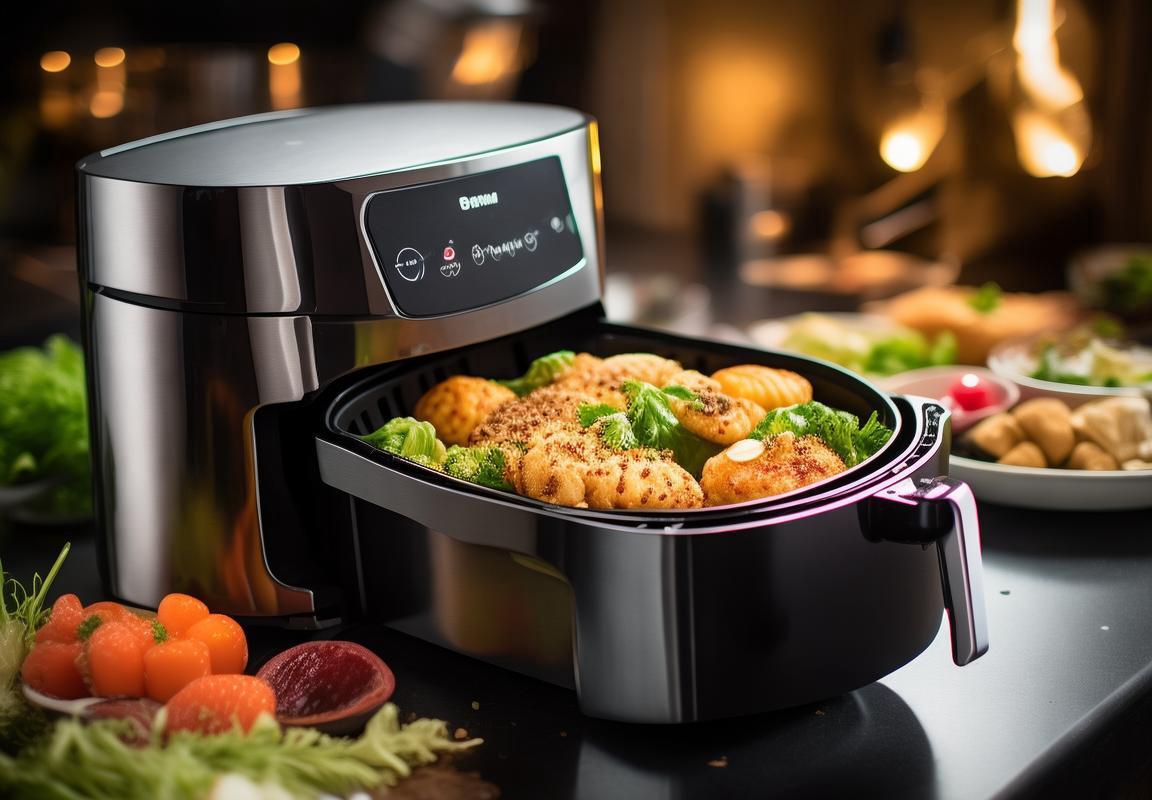
Innovations and Features That Set Restaurant-Grade Air Fryers Apart
The restaurant-grade air fryer market is a landscape peppered with cutting-edge technology and innovative features that differentiate these appliances from their consumer counterparts. Here’s a closer look at some of the standout innovations and features that set these fryers apart:
-
Industrial Strength Construction: Restaurant-grade air fryers are built to withstand the rigors of professional kitchens. They often feature robust stainless steel bodies, heavy-duty hinges, and reinforced interiors that can endure constant use without succumbing to wear and tear.
-
Large Capacity and Rapid Cooking: These fryers are designed to handle large volumes of food, making them ideal for busy restaurants. Their oversized baskets and powerful heating elements allow for rapid cooking times, which is crucial for maintaining a high pace in a professional kitchen.
-
Temperature Control Systems: One of the key features that differentiate restaurant-grade air fryers is their precise temperature control. With digital displays and adjustable settings, chefs can maintain consistent cooking temperatures, ensuring that food is cooked to perfection every time.
-
Advanced Heat Distribution: These fryers often come with advanced heat distribution systems that ensure even cooking across the entire basket. This feature is particularly important for achieving a crispy exterior and a tender interior, which is a hallmark of restaurant-quality fried foods.
-
Safety Features: Safety is paramount in commercial kitchens, and restaurant-grade air fryers are equipped with multiple safety mechanisms. Overheat protection, automatic shut-off, and cool-touch exteriors are just a few of the features that prevent accidents and protect kitchen staff.
-
Energy Efficiency: Despite their industrial power, these fryers are designed to be energy-efficient. Modern technology allows for quicker cooking times, reducing the overall energy consumption compared to traditional deep fryers.
-
Easy-to-Clean Design: The maintenance of commercial kitchen equipment is a significant consideration. Restaurant-grade air fryers are often designed with easy-to-clean components, including removable baskets and non-stick surfaces that reduce the need for intensive cleaning.
-
Customizable Cooking Profiles: Many high-end models offer programmable cooking profiles, allowing chefs to save their preferred settings for various types of food. This feature streamlines the cooking process and ensures consistency across multiple batches.
-
Smart Technology Integration: Some models are integrating smart technology, allowing for remote monitoring and control via an app. This connectivity can be a game-changer for busy kitchens, as chefs can manage their fryers even when they’re not at the kitchen station.
-
Modular and Expandable Systems: For larger operations, restaurant-grade air fryers can be part of a modular system that can be expanded or reconfigured to meet the evolving needs of the kitchen. This flexibility is crucial for establishments that may grow or change their menu over time.
-
Eco-Friendly Cooking: With health and environmental concerns on the rise, many restaurant-grade air fryers are being designed with eco-friendly materials and energy-saving features. This not only reduces the carbon footprint but also aligns with the values of conscious consumers.
-
Customization Options: Some manufacturers offer customization options, allowing restaurants to have fryers that match their brand identity. This can include color options, logo printing, and even custom-built solutions for unique kitchen layouts.
These innovations and features are not just about cooking food; they’re about creating a professional-grade cooking experience that can be replicated time and time again, ensuring that the quality of food served is consistent and meets the high standards expected in the culinary industry.
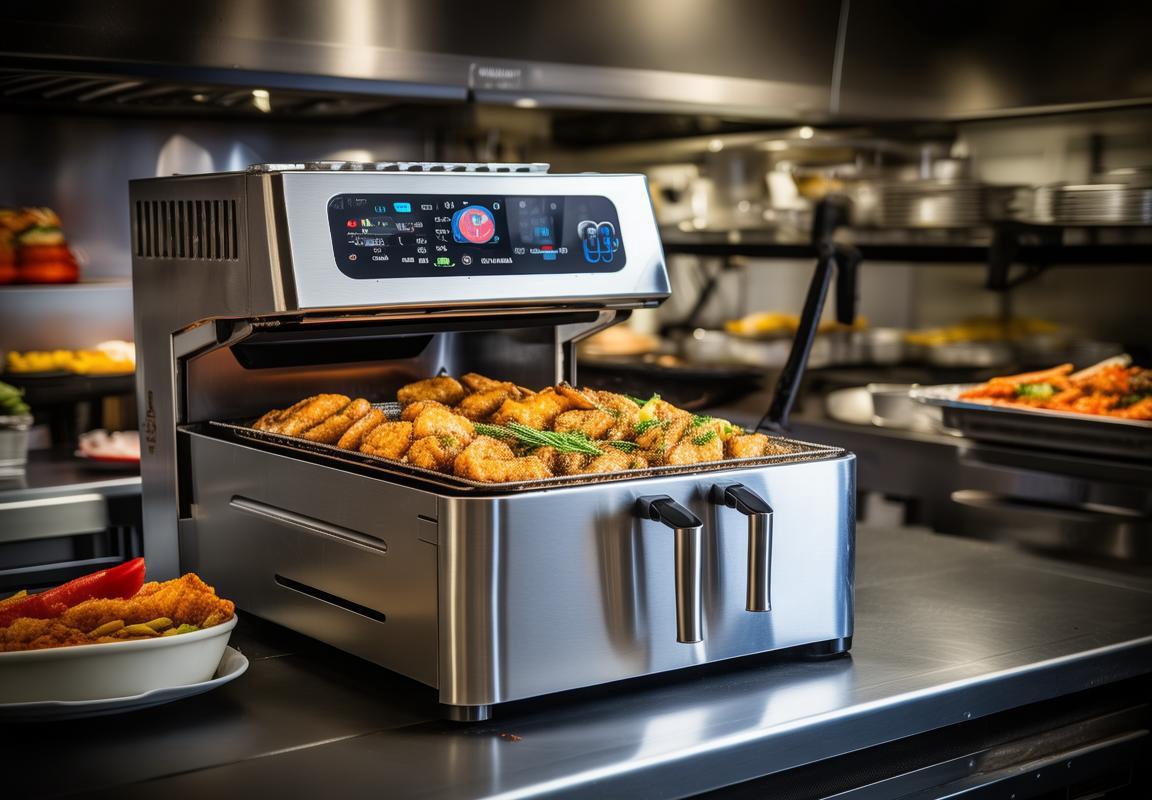
Market Analysis: Size, Growth, and Trends
In recent years, the market for restaurant-grade air fryers has experienced a significant surge, driven by a variety of factors. This section delves into the size of the market, its growth trajectory, and the trends shaping the industry.
The market size for restaurant-grade air fryers has expanded considerably, with sales figures reflecting a notable upward trend. The rise in demand can be attributed to several key factors, including health consciousness among consumers and the culinary innovation brought about by these appliances.
As health concerns have come to the forefront, there has been a shift towards healthier cooking methods that reduce the need for excessive oil. Restaurant-grade air fryers have stepped in to fill this void, offering a cooking solution that is both healthier and efficient. The market size is therefore driven by the increasing number of restaurants and commercial kitchens adopting these devices to meet customer expectations.
The growth trajectory of the market is impressive, with compound annual growth rates (CAGR) reflecting a robust expansion. This growth is not uniform across all regions, with some areas experiencing higher adoption rates than others. Europe and North America have been at the forefront of this trend, due in part to the early adoption of health-focused cooking technologies.
In terms of trends, the market is witnessing a number of key developments. One of the most prominent is the emphasis on energy efficiency. As environmental concerns grow, manufacturers are focusing on creating air fryers that consume less energy without compromising performance. This not only benefits the bottom line of businesses but also contributes to a greener planet.
Another significant trend is the integration of smart technology. Restaurant-grade air fryers are now coming equipped with features like touchscreens, remote control capabilities, and connectivity to smart home systems. This technological integration enhances the user experience and offers added convenience to professional chefs and restaurant owners.
Customization and personalization are also shaping the market. Manufacturers are offering a wide range of models that cater to different types of cooking requirements, from smaller units designed for specific tasks to larger, more robust machines suitable for high-volume cooking. This diversity allows restaurants to tailor their equipment to their specific needs.
Sustainability is another driving force in the market. With the push for sustainable practices in the foodservice industry, restaurant-grade air fryers are being designed with recyclable materials and longer lifespans in mind. This not only aligns with environmental goals but also reduces the overall cost of ownership for businesses.
The market for restaurant-grade air fryers is also seeing a rise in cross-industry collaboration. Manufacturers are working with culinary experts to develop new recipes and cooking techniques that take full advantage of the capabilities of these appliances. This collaboration is not only enhancing the product offering but also expanding the potential uses of air fryers in commercial kitchens.
Lastly, the market is influenced by regulatory changes and certifications. As health and safety standards evolve, so does the requirement for products to meet certain criteria. Restaurant-grade air fryers that adhere to these standards are gaining a competitive edge in the market.
In conclusion, the size, growth, and trends in the restaurant-grade air fryer market are indicative of a dynamic and rapidly evolving industry. With health consciousness, technological advancements, and environmental sustainability at the forefront, the market is poised for continued expansion as more businesses recognize the value of these innovative cooking solutions.
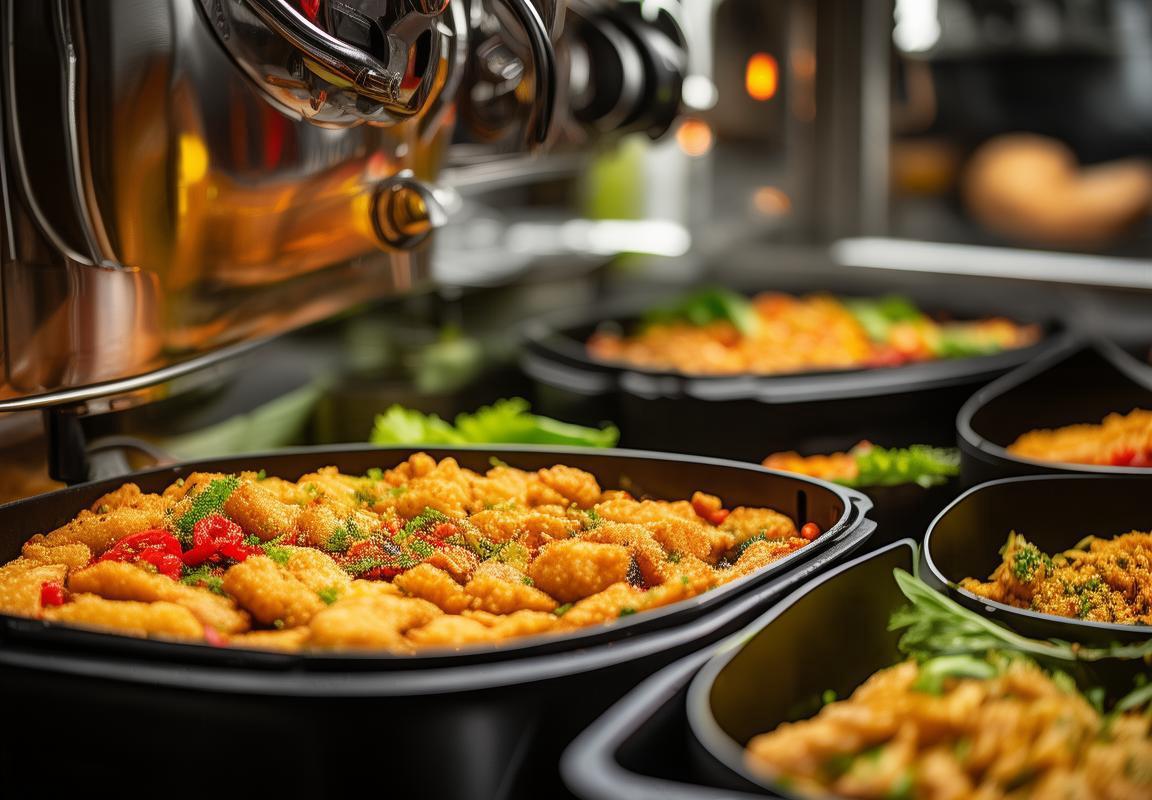
Impact on Professional Cooking and Home Use
The integration of restaurant-grade air fryers into both professional kitchens and home environments has sparked a transformation in the way food is prepared. These appliances, designed to mimic the commercial-grade performance, have begun to reshape culinary landscapes in several notable ways.
Commercial Kitchens Experience Efficiency GainsIn professional settings, these air fryers offer a streamlined cooking process that reduces the need for excessive oil. Chefs and cooks are turning to these appliances for their ability to crisp foods like French fries and chicken wings with a fraction of the fat, which not only enhances health but also cuts down on cleanup time. The consistent and even cooking achieved by these fryers ensures that every batch is of high quality, a crucial factor in maintaining a restaurant’s reputation.
Home Cooks Embrace Convenience and HealthOn the consumer front, the ease of use and health benefits have made restaurant-grade air fryers a popular choice among home cooks. These appliances are compact yet powerful, allowing even those without a professional kitchen to enjoy the taste of restaurant-quality fried foods at home. The convenience of air frying is particularly appealing to busy individuals who seek quick and healthy meal options without compromising on flavor.
Enhanced Flavor ProfilesOne of the standout features of restaurant-grade air fryers is their ability to lock in the natural flavors of food while cooking. This is achieved through a combination of high-heat circulation and minimal oil usage. The result is a deliciously crispy exterior with a tender, juicy interior, which is a significant upgrade from traditional deep-frying methods. Home cooks are now able to experiment with various spices and herbs, creating unique flavor profiles that were once exclusive to commercial kitchens.
Increased Energy EfficiencyThe shift towards restaurant-grade air fryers is also driven by the growing demand for energy-efficient appliances. These fryers consume significantly less electricity compared to traditional deep fryers, making them an environmentally friendly choice. For restaurants looking to reduce their carbon footprint, these appliances offer a practical solution. Similarly, environmentally conscious home cooks appreciate the energy savings and the positive impact on their utility bills.
Customizable Cooking OptionsModern restaurant-grade air fryers often come with a variety of cooking modes and settings, allowing for a wide range of culinary applications. From roasting and baking to grilling and toasting, these appliances can handle a multitude of tasks. This versatility is a game-changer for professional chefs who can now offer a diverse menu without investing in multiple appliances. For home users, it means having the flexibility to prepare a variety of dishes with a single device.
Improved Health and WellnessThe health and wellness trend has been a significant driver in the popularity of restaurant-grade air fryers. With the increasing awareness of the health risks associated with deep-frying, consumers are seeking alternatives that offer similar taste and texture but with fewer calories and healthier fat profiles. These air fryers have become a staple in health-conscious households, providing a way to enjoy favorite fried foods without the guilt.
Integration with Smart TechnologyAnother innovation in the industry is the integration of smart technology into restaurant-grade air fryers. Users can now control their appliances remotely via smartphones, receive notifications about cooking times and temperatures, and even set timers. This connectivity not only adds convenience but also allows for precise control over the cooking process, ensuring that every dish is cooked to perfection.
The Emergence of New Cooking TechniquesThe rise of restaurant-grade air fryers has also led to the development of new cooking techniques. Chefs are now experimenting with air frying to achieve results previously only possible with other cooking methods. This has opened up new possibilities for creative cuisine and has sparked a wave of innovation in the culinary world.
The expansion of the restaurant-grade air fryer market is a testament to the evolving preferences of both professional chefs and home cooks. These appliances have become a cornerstone in modern cooking, offering a blend of efficiency, health, and versatility that is hard to match. As the market continues to grow, we can expect to see even more advancements and innovations that further enhance the cooking experience.
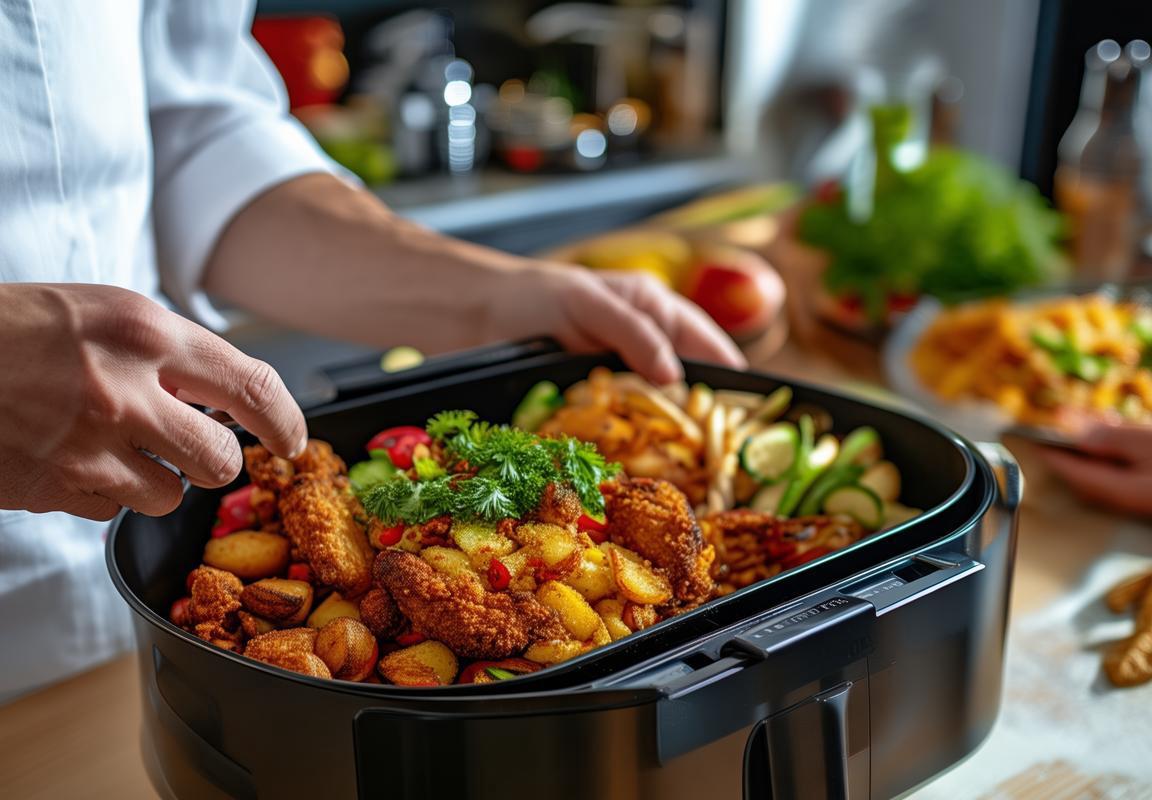
Regulatory Considerations and Safety Standards
In the realm of commercial kitchen equipment, the adherence to stringent regulatory standards and safety protocols is paramount. For restaurant-grade air fryer manufacturers, navigating these considerations is crucial for both compliance and consumer trust. Here’s an exploration of the regulatory landscape and safety standards that shape the industry.
The rigorous standards for restaurant-grade appliances are a reflection of the high-risk environment in which they operate. These appliances are designed to withstand continuous use, often in environments with fluctuating temperatures and potential exposure to moisture. Here’s a breakdown of the key regulatory aspects:
-
Electrical Safety: Compliance with electrical safety standards is non-negotiable. This includes adherence to National Electrical Code (NEC) guidelines, which dictate the safe installation and operation of electrical equipment. Restaurant-grade air fryers must undergo rigorous testing to ensure they do not pose a fire hazard or electrical shock risk.
-
Temperature Control: The ability to maintain precise temperature control is vital for food safety and quality. These air fryers must meet specific temperature control standards to prevent undercooking or overcooking, which can lead to foodborne illnesses or compromised taste.
-
Materials and Construction: The materials used in the construction of restaurant-grade air fryers are subject to strict regulations. They must be made from non-reactive, food-grade materials that do not leach harmful substances into the food. Additionally, the fryers must be able to withstand high temperatures without warping or releasing fumes.
-
Energy Efficiency: With environmental concerns on the rise, energy efficiency is a significant consideration. Manufacturers are increasingly being asked to produce appliances that consume less energy, thereby reducing the overall carbon footprint of commercial kitchens.
-
Emissions: The emissions from restaurant-grade air fryers, particularly in terms of smoke and odors, are regulated. These appliances must be designed to minimize emissions, ensuring that the kitchen environment remains safe and pleasant for staff and customers.
-
Cleaning and Maintenance: The ease of cleaning and maintenance is a critical factor in commercial kitchens. Appliances must be designed with accessible components and surfaces that can be cleaned effectively without the risk of cross-contamination.
-
User Safety: The physical design of restaurant-grade air fryers must prioritize user safety. This includes features such as cool-to-the-touch exteriors, secure locking mechanisms, and clear safety warnings to prevent accidents.
-
Food Contact Surfaces: The surfaces that come into contact with food must meet specific hygiene requirements. These surfaces are often made from materials like stainless steel or certain plastics that are deemed safe for food contact.
-
Certification and Testing: Manufacturers must undergo third-party testing and certification to ensure compliance with these standards. Certifications like NSF (National Sanitation Foundation) or CE (Conformité Européenne) are widely recognized and provide consumers with a level of assurance about the safety of the product.
-
International Regulations: For manufacturers aiming to export their products, navigating international regulations is essential. Each country may have its own set of standards and certifications, which can vary significantly from one another.
In summary, the regulatory considerations and safety standards for restaurant-grade air fryers are multifaceted, encompassing electrical, thermal, material, and user safety aspects. Adhering to these standards not only ensures the safety and quality of the product but also upholds the reputation and credibility of the manufacturer within the industry. As technology advances and consumer awareness grows, these standards are likely to evolve, requiring continuous vigilance and adaptation from manufacturers to keep pace with the demands of the market.
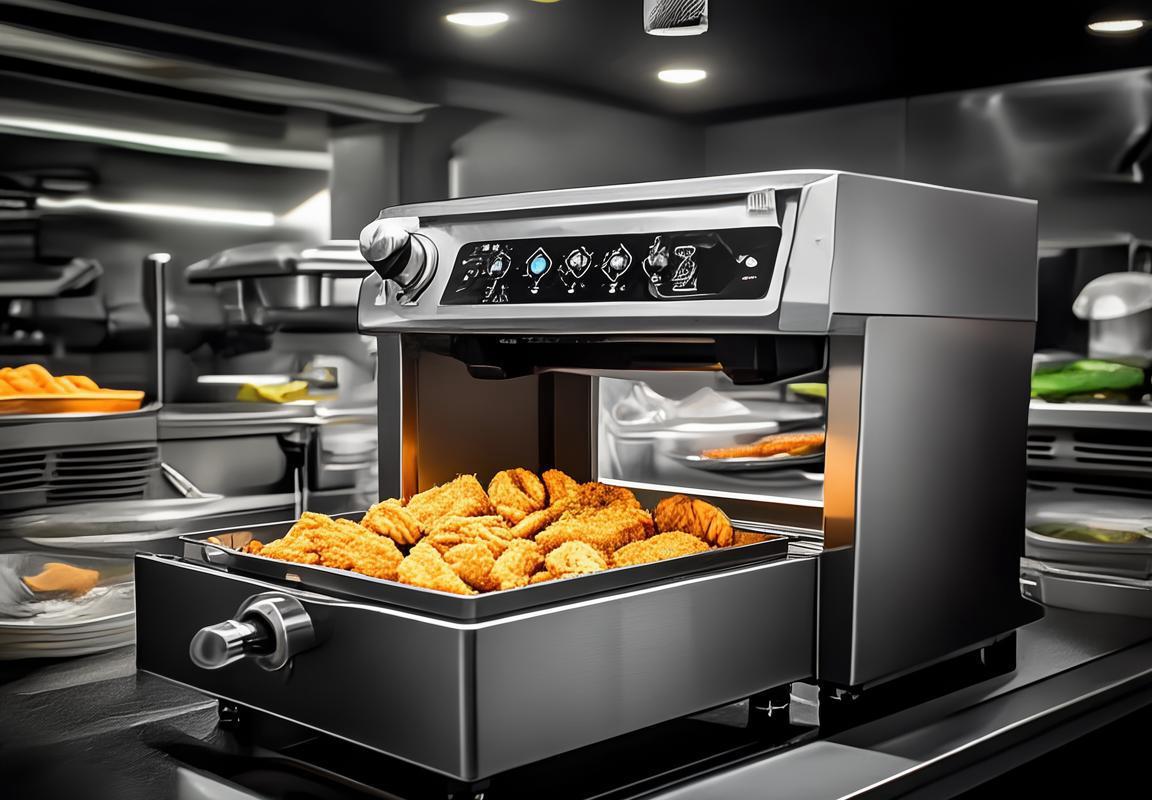
Supply Chain Dynamics: Factories and Manufacturers
The complexities of the supply chain in the restaurant-grade air fryer industry are a testament to the meticulous attention to detail required to meet the stringent demands of both commercial kitchens and discerning consumers. From raw materials to finished products, each stage plays a crucial role in ensuring the quality and reliability of these high-performance appliances.
Manufacturers must navigate a diverse array of components, each with its own set of specifications and sourcing challenges. For instance, the heating elements are often crafted from specialized metals that can withstand extreme temperatures and maintain a consistent performance. These materials are not only durable but also energy-efficient, which is a key consideration for restaurants looking to reduce their operational costs.
The design and engineering phase involves collaboration with experts who understand the unique requirements of restaurant-grade appliances. These units are not just larger and more robust; they also need to be built with the durability to handle the rigorous demands of a commercial kitchen environment. This includes considerations for the frequency of use, the types of food they will be used to prepare, and the potential for wear and tear over time.
Once the design is finalized, the next step is sourcing the components. This process can be intricate, as manufacturers must ensure that every part meets the highest safety and quality standards. For example, the fans and motors used in these air fryers need to be able to operate continuously without overheating, which requires careful selection of materials and construction.
The assembly process is equally meticulous, with each component being integrated into the unit with precision. The assembly lines for restaurant-grade air fryers are often more complex than those for consumer models, as they require additional testing and quality control measures to ensure that the final product is up to par. This includes thermal testing to ensure even heating and safety checks to prevent any potential hazards.
In terms of raw materials, the industry relies heavily on metals, plastics, and electronic components. The sourcing of these materials is not just about finding the cheapest options; it’s about finding suppliers who can provide the necessary certifications and guarantees of quality. For instance, metals must be free of harmful substances, and plastics must be able to withstand high temperatures without releasing harmful fumes.
Transportation is another critical aspect of the supply chain. Air fryers are heavy and bulky, which means that they require careful handling and appropriate transportation methods to prevent damage. This is particularly important when shipping internationally, where factors like weather and sea conditions can pose additional challenges.
Once the units are manufactured, they are often stored in large warehouses before being distributed to retailers or directly to customers. These warehouses must be equipped with the right storage conditions to protect the products from damage, especially considering the sensitive nature of the electronics within the appliances.
The impact of logistics on the supply chain cannot be overstated. Efficient supply chain management can significantly reduce lead times and costs, which is crucial for maintaining a competitive edge in the market. Manufacturers must also consider the environmental impact of their supply chain, with an increasing focus on sustainability and eco-friendly practices.
As the demand for restaurant-grade air fryers continues to grow, so does the need for innovative solutions in the supply chain. This includes the development of new materials that are more durable and sustainable, as well as the adoption of advanced technologies to streamline the production and distribution processes.
In conclusion, the supply chain for restaurant-grade air fryers is a complex web of relationships and processes, each critical to the success of the industry. From the careful selection of materials to the rigorous quality control during assembly, every step is designed to ensure that these appliances meet the demands of professional kitchens and the expectations of consumers who seek the same level of performance at home.
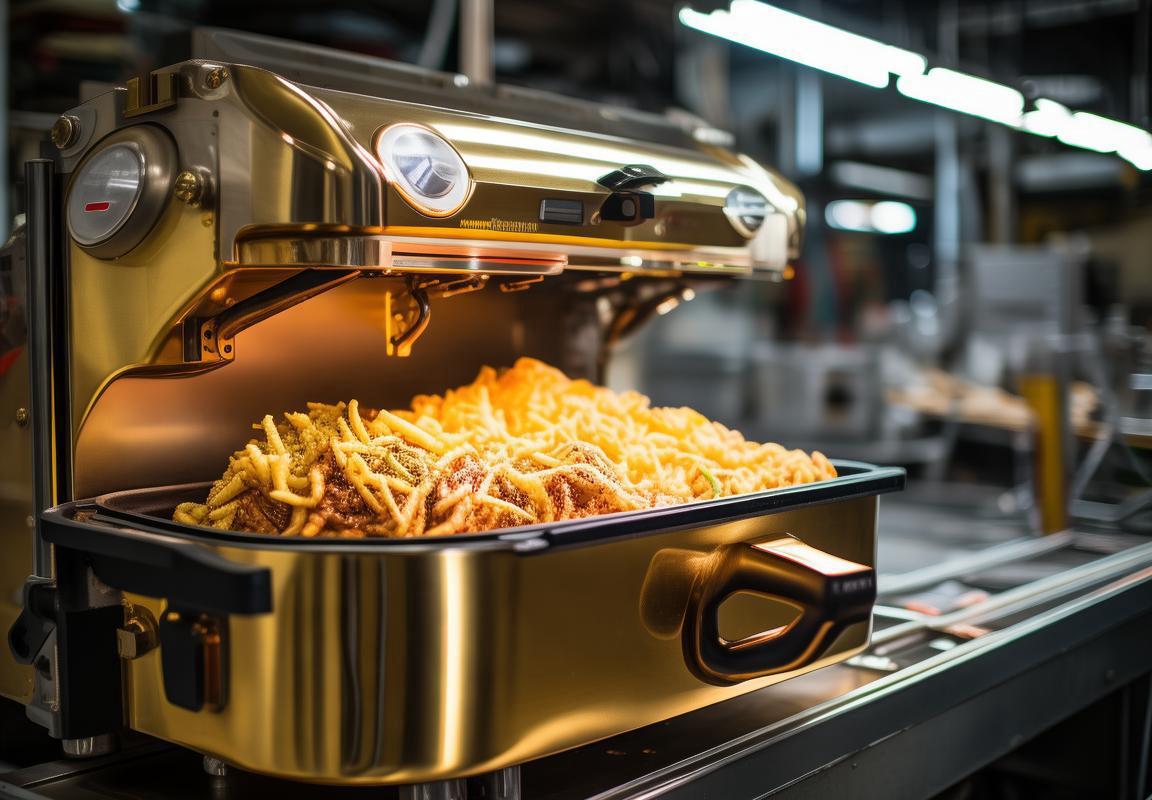
Consumer Insights: Why Professionals and Home Chefs Are Choosing Them
The shift towards healthier cooking methods has propelled the popularity of restaurant-grade air fryers. Professionals and home chefs alike are embracing these appliances for their versatility and ability to mimic traditional cooking styles with a healthier twist. Let’s delve into the reasons behind this trend.
Professionals are drawn to the precision and efficiency that these air fryers offer. They can produce crispy, golden-brown results with minimal oil, making them ideal for fast-casual and full-service restaurants. The ability to prepare a variety of dishes, from fried chicken to vegetables, without the need for deep-fat fryers is a game-changer for kitchens striving to reduce their carbon footprint and offer healthier options to diners.
Home chefs are also gravitating towards these appliances due to their ease of use. The intuitive interfaces and clear cooking instructions make it simple to achieve restaurant-quality results in the comfort of one’s own kitchen. Moreover, the convenience of cooking a variety of dishes in one appliance without the need for multiple pots and pans is incredibly appealing.
The compact size and sleek design of restaurant-grade air fryers are another factor contributing to their popularity. They take up less space on countertops and can be easily stored away when not in use. This is particularly beneficial for smaller kitchens or those with limited storage.
The health-conscious aspect cannot be overlooked. These air fryers allow for the preparation of fried foods with up to 80% less fat than traditional frying methods. This reduction in fat content is significant in reducing the calorie count and the risk of heart disease and obesity. For professionals and home chefs who prioritize health and wellness, this feature is a major selling point.
The variety of cooking functions is also a draw. From crispy to tender, these air fryers can handle a wide range of cooking techniques, including roasting, baking, and grilling. This versatility means that home chefs can experiment with new recipes without the need for additional equipment, while professionals can offer a diverse menu without the associated costs.
The integration of smart technology is another innovation that has captured the interest of both professionals and home chefs. Many modern air fryers come with features like Bluetooth connectivity, allowing users to monitor and control their cooking remotely via a smartphone app. This is particularly useful for those who want to multitask or who are not at home while cooking.
Additionally, the durability and longevity of restaurant-grade air fryers are factors that cannot be ignored. Built to withstand the demands of professional kitchens, these appliances are often made with high-quality materials that can withstand constant use and high temperatures. This durability means that they can also stand up to the rigorous demands of home cooking, making them a worthwhile investment for both professionals and home chefs.
The rise of health consciousness, coupled with the desire for convenience and innovation, has created a perfect storm for the adoption of restaurant-grade air fryers. Whether it’s the need for healthier options, the convenience of a multipurpose appliance, or the allure of smart technology, these devices are quickly becoming a staple in both professional kitchens and home cookspaces.
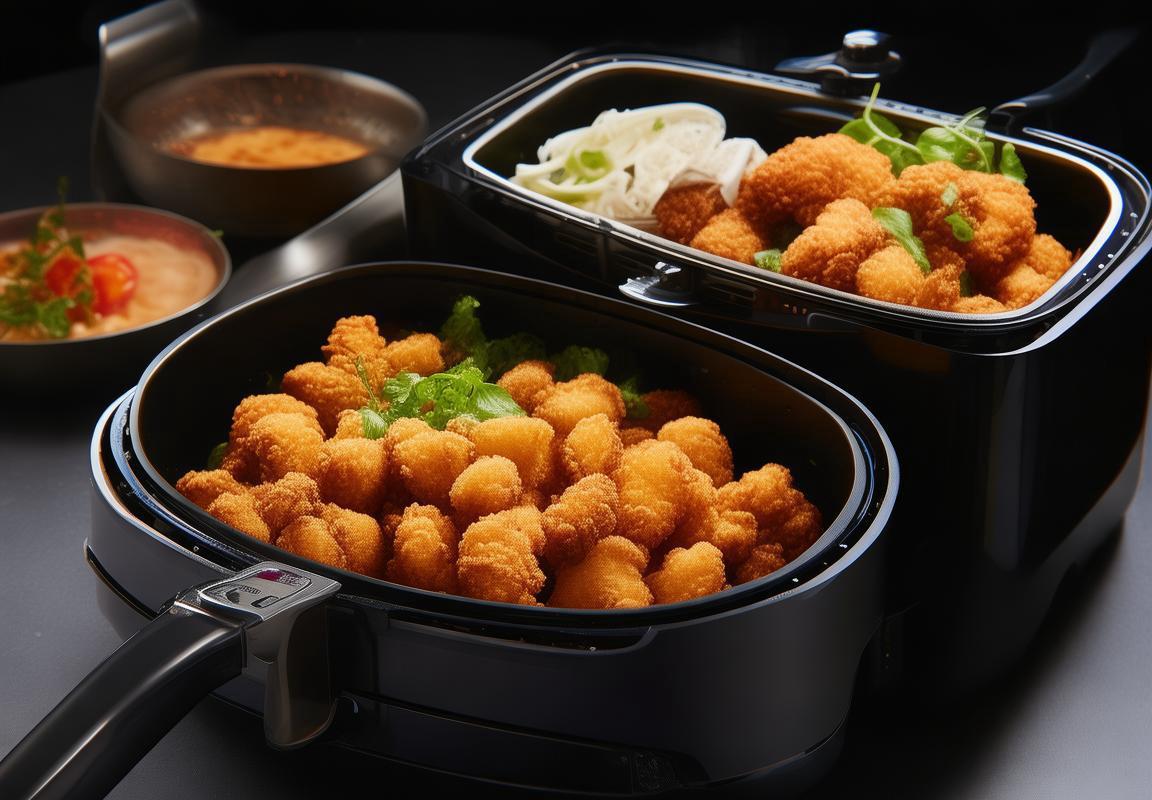
Future Outlook: Predictions and Challenges
The market for restaurant-grade air fryers is witnessing a surge, driven by a combination of health-conscious consumers, the convenience of modern lifestyles, and the desire for restaurant-quality cooking at home. This trend is not just confined to the Western markets; it’s a global phenomenon that’s reshaping how both professionals and home chefs approach cooking. The reasons behind this shift are multifaceted and intriguing.
Professionals are drawn to these air fryers for their ability to produce crispy, golden results without the excessive oil traditionally associated with deep-frying. This not only aligns with the health trends that prioritize low-calorie, low-fat cooking methods but also with the need for efficient and cost-effective kitchen solutions. The technology has evolved to the point where these appliances can handle high volumes of food with consistent quality, making them ideal for busy commercial kitchens.
For home chefs, the appeal lies in the ability to recreate the flavors and textures of restaurant meals with minimal effort. The convenience of air frying, which offers a healthier alternative to traditional frying, has become a game-changer for those who love to cook but are time-poor or prefer not to use large amounts of oil. The accessibility of these appliances has made it possible for anyone with a kitchen to enjoy the benefits of air frying technology.
In terms of features, restaurant-grade air fryers have distinct advantages over their consumer counterparts. They often come with larger capacities, more powerful motors, and temperature controls that allow for precise cooking. These appliances are built to withstand the rigors of professional use, with durable construction and components that can handle the demands of a commercial kitchen environment.
Market Size and GrowthThe market size for restaurant-grade air fryers has been expanding significantly. According to recent industry reports, the global market for commercial air fryers is projected to grow at a CAGR of around 8% from 2020 to 2025. This growth is attributed to the increasing awareness of health and wellness, coupled with the rise of fast-casual dining and the demand for healthier cooking options.
Trends in the MarketSeveral trends are shaping the restaurant-grade air fryer market. One notable trend is the integration of smart technology, with some models offering connectivity to mobile devices, allowing users to monitor and control the cooking process remotely. Another trend is the focus on sustainability, with manufacturers increasingly using eco-friendly materials and energy-efficient designs.
Impact on Professional CookingIn professional kitchens, the introduction of restaurant-grade air fryers has had a transformative impact. Chefs are now able to offer guests a wide range of crispy, fried dishes that are healthier and less time-consuming to prepare. The technology has also opened up new possibilities for culinary creativity, as chefs experiment with different recipes and cooking times to achieve the perfect texture and flavor.
Impact on Home UseOn the home front, air fryers have democratized gourmet cooking. Home chefs can now enjoy the same level of culinary satisfaction as their professional counterparts without the need for extensive training or expensive equipment. The convenience and health benefits have made air fryers a staple in many home kitchens, encouraging experimentation with new recipes and cooking techniques.
Safety StandardsAs with any kitchen appliance, safety is a paramount concern. Restaurant-grade air fryers must meet stringent safety standards to ensure they are safe for both commercial and domestic use. These standards cover electrical safety, fire resistance, and thermal protection. Manufacturers often invest in certifications from reputable bodies to demonstrate their commitment to safety.
Innovation in Safety FeaturesTo address the safety concerns, manufacturers have introduced a range of innovative features. Some air fryers come with automatic shut-off mechanisms that activate when the cooking chamber is left unattended or when the appliance reaches unsafe temperatures. Others have non-stick interiors that reduce the risk of burns and make cleaning easier.
Challenges for the IndustryDespite the growth and popularity of restaurant-grade air fryers, the industry faces several challenges. One challenge is the need to continually innovate to meet the evolving demands of consumers and the competitive landscape. Another challenge is the need to educate both professionals and home chefs on the proper use of these appliances to maximize safety and minimize the risk of accidents.
Future OutlookLooking ahead, the future of the restaurant-grade air fryer industry is promising. As health trends continue to dominate consumer preferences, the demand for these appliances is expected to grow. Manufacturers will need to focus on further enhancing the technology to ensure that these appliances are not only safe and efficient but also user-friendly. The industry will also need to address the issue of sustainability and environmental responsibility, as the global community becomes more conscious of its ecological footprint.